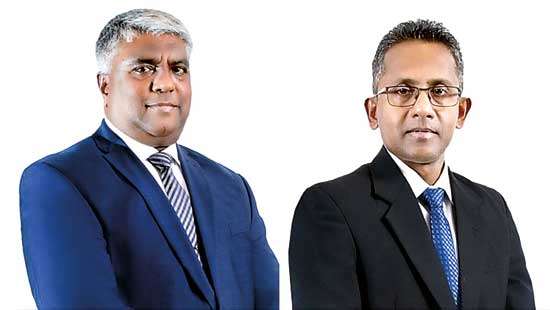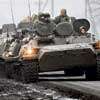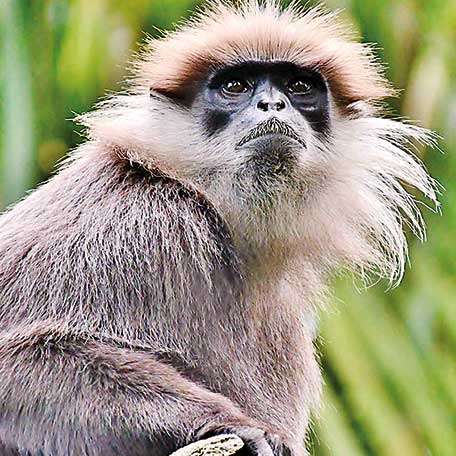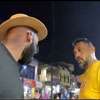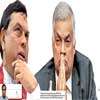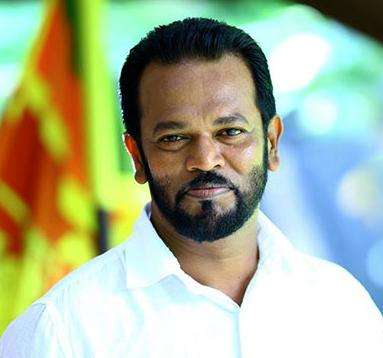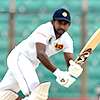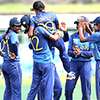The Rajiv Gandhi assassination committed on Indian soil was an act of international terrorism that placed the LTTE on the index of global terrorists.
The decision and overall plan to assassinate Rajiv Gandhi was taken by LTTE leader Veluppillai Prabhakaran and tiger intelligence chief Shanmugalingam Sivashankar alias “Pottu Ammaan”.
The key LTTE operative who devised the assassination plot and directly oversaw its execution at field level was an intelligence wing member of the LTTE who used two nom de guerres. One name was Raghuvaran.The other was Sivarasan.
By
D.B.S.Jeyaraj
 Former Indian Prime Minister Rajiv Gandhi was assassinated 30 years ago by the Liberation Tigers of Tamil Eelam(LTTE) at a place called Sriperumbhudur in the Indian state of Tamil Nadu on May 21st 1991. Rajiv Ratna Gandhi who was India’s Prime minister from 31st October 1984 to December 2nd 1989 was not serving as premier at the time of his demise.. An election campaign was underway then to elect a new Lok Sabha or Parliament. The Congress led by Rajiv was the front runner in that race then.
Former Indian Prime Minister Rajiv Gandhi was assassinated 30 years ago by the Liberation Tigers of Tamil Eelam(LTTE) at a place called Sriperumbhudur in the Indian state of Tamil Nadu on May 21st 1991. Rajiv Ratna Gandhi who was India’s Prime minister from 31st October 1984 to December 2nd 1989 was not serving as premier at the time of his demise.. An election campaign was underway then to elect a new Lok Sabha or Parliament. The Congress led by Rajiv was the front runner in that race then.
Rajiv as he was generally known was in Sriperumbudur to address a propaganda meeting in support of Congress party candidate Ms. Maragatham Chandrasekhar. The 47 year old Indian ex –premier was then immersed in a hectic political campaign to win the Indian Parliamentary elections.
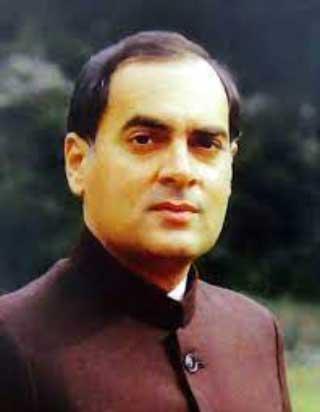 It was then that a Sri lankan Tamil girl known by the name of “Dhanu” got close to Rajiv Gandhi and gave him a sandalwood garland. The be – spectacled girl in an orange and green churidar then bent down respectfully to touch Rajiv’s feet. She set off a concealed explosive device that was strapped to her body. Rajiv Gandhi, the assailant Dhanu and at least 18 others were killed in the blast instantly. 42 were seriously injured.
It was then that a Sri lankan Tamil girl known by the name of “Dhanu” got close to Rajiv Gandhi and gave him a sandalwood garland. The be – spectacled girl in an orange and green churidar then bent down respectfully to touch Rajiv’s feet. She set off a concealed explosive device that was strapped to her body. Rajiv Gandhi, the assailant Dhanu and at least 18 others were killed in the blast instantly. 42 were seriously injured.
A few of the injured also succumbed to their wounds in hospital later on.The “human bomb” assassination that was soon to become a hallmark of the tiger organization rocked India and shocked the world.
The politico-military chutzpah of the LTTE in deploying an assassination squad across the seas to eliminate a former and potential future prime minister of the regional super power on his home turf, raised many an eyebrow after Rajiv Gandhi was murdered. The Rajiv Gandhi assassination committed on Indian soil was an act of international terrorism that placed the LTTE on the index of global terrorists.
Many security affairs analysts have in the past evinced great interest in how this assassination was executed. The decision and overall plan to assassinate Rajiv Gandhi was taken by LTTE leader Veluppillai Prabhakaran and tiger intelligence chief Shanmugalingam Sivashankar alias “Pottu Ammaan”.The actual assassin who blew up her explosive –laden body belt was the girl called Dhanu.
“One-eyed Jack”
The key LTTE operative who devised the assassination plot and directly oversaw its execution at field level was an intelligence wing member of the LTTE who used two nom de guerres. One name was Raghuvaran.The other was Sivarasan. Since he had lost an eye, he was frequently called by his comrades at arms and colleagues as “Ottraikkannan” (One –eyed person). Sections of the Indian English media referred to him as “one –eyed Jack”, evoking memories of the classic western movie directed by Marlon Brando who also starred in the lead role. Sivarasan was specifically selected and assigned the task of killing Rajiv Gandhi by Prabhakaran and Pottu Ammaan.
After an intense 90 day manhunt , Indian law –enforcement officials surrounded the house in which Sivarasan along with some other LTTE cadres was staying in. It was a house in the Bangalore (now Bengaluru) suburb of Konanakunte in Karnataka state. Sivarasan and the others consumed cyanide and killed themselves before they could be captured alive. Ironically Sivarasan who was responsible for Rajiv’s murder committed suicide on August 20th which was the date of Rajiv Gandhi’s birth.
The one eyed man known as Sivarasan who masterminded the Rajiv Gandhi assassination used many aliases such as Sivarajan, Rajan, Rajah, Arumai, Aravinth, Raghuvaran, Raghu and Raghu-appah. His real name however was Chandrasekharam pillai Packiachandran. He hailed from Udupiddy, a town about 32 km from Jaffna city.
Packiyachandran was born in 1958, the year of the first major anti-Tamil pogrom in Sri Lanka. He was the eldest child.Young Packiachandran was inculcated with Tamil nationalist feelings at a very tender age by his father Chandrasegarampillai a school teacher.When large-scale anti-Tamil violence occurred in July 1983, thousands of Tamil youths flocked to the militant organizations to obtain arms training and fight for a separate Tamil state. Packiyachandran too was one of them. He initially joined the Tamil Eelam Liberation Organisation(TELO). Later he left the TELO and joined the LTTE.His LTTE nom-de guerre was Raghuvaran but he also used the name Raghu at times.
Indo – Lanka Agreement
In May 1987, Raghuvaran was injured in a clash with the Sri Lankan armed forces near the Jaffna Fort. This was the time when the army launched “operation liberation” in which the Vadamaradchi region of Jaffna peninsula was re-captured by the armed forces. Among other injuries, Raghuvaran’s left eye was also affected. The Indo – Lanka agreement was signed by Indian Prime minister Rajiv Gandhi and Sri Lankan President JR Jayawardene on July 29th 1987. This paved the way for Indian troops to be stationed in the Northern and Eastern provinces of Sri Lanka under the nomenclature of Indian Peace Keeping Force (IPKF).
A very large number of injured tiger cadres were taken to India aboard Indian aircraft for medical treatment. Raghuvaran too was taken in an Indian helicopter to Tamil Nadu. He received treatment for his eye injury at the Aravind eye hospital in Madurai. Despite treatment he lost his left – eye permanenty. Thereafter he wore a plastic eye. In order to cover up his left eye Raghuvaran began to wear tinted glasses most of the time. Still this did not deter his comrades from referring to him in lighter vein as “Otraikkannan” or one –eyed person.
When the confrontation with the Indian army began in October 1987, Raghu is said to have shifted from the peninsula into the Eastern province. He came back to the North in early 1988 and functioned under the Vadamaratchy commander Ruthrapathy Sridhar alias Major James of Valvettithurai.
Subsequently Raghuvaran was transferred from the military wing to to the LTTE intelligence wing that functioned under Pottu Ammaan. He was promoted as Captain and given a new nom de guerre “Sivarasan”. Capt . Sivarasan of the LTTE intelligence division was entrusted with specific assignments to be undertaken clandestinely in India. Among these were the expansion of the LTTE intelligence network in India and the setting up of safe houses in Tamil Nadu.
Kandasamy Pathmanabha
More importantly he was tasked with an assassination assignment. The target was Kandasamy Pathmanabha alias Naabhaa a.k. a. Ranjan who was the Secretary – General of the Eelam Peoples Revolutionary Liberation Front (EPRLF).A blueprint to assassinate Padmanabha on Indian soil was devised by Sivarasan in consultation with Pottu Amman. This entailed the deployment of a “spy “ in Chennai to monitor EPRLF movements.
Sivarasan was entrusted with the selection and stationing of this spy in the Kodambakkam area of Chennai where the EPRLF had an office. The spy Suthenthirarajah alias “Sinna Santhan “ was handpicked by Sivarasan who also “handled” him. The spy did his work well and provided accurate info.On June 19th 1990 an LTTE hit squad including Kiruban and One –eyed Sivarasan stormed into an apartment in Zacharaiyah colony, Choolaimedhu and killed Padmanabha and 12 others. The hit squad members along with the spy were successful in making a getaway back to Sri Lanka after hi-jacking a vehicle to reach the coast.
The LTTE hierarchy was elated by the successful assassination. Sivarasan was personally congratulated and praised by Prabhakaran and Pottu Ammaan. The LTTE leadership was confident that one –eyes Sivarasan was capable of planning and executing major operations in India.
The Padmanabha assassination also whetted the LTTE appetite for more assassinations on Indian soil. Without any thought about potential consequences, Prabhakaran and Pottu Ammaan decided to assign Sivarasan the task of masterminding the assassination of Rajiv Gandhi. The groundwork required for the diabolical plot began to be laid by Sivarasan.
Unlike the Padmanabha assassination where firearms and grenades were used, another new method was to be used to kill Rajiv Gandhi. The idea was to make a mystery of the assailant so that blame would not be attached to the LTTE.For this the would be assassin had to be within close proximity to Rajiv Gandhi.Opportunities to gain easy access to Rajiv became available with the announcement of fresh elections to the Indian parliament in 1991.
Broad Conspiracy Hatched
A broad conspiracy to murder Rajiv Gandhi was hatched in Northern Sri Lanka by tiger supremo Prabhakaran , Intelligence chief Pottu Ammaan, LTTE woman’s intelligence unit head Akhila and Sivarasan who was also given the responsibility of executing the assassination on Indian soil. He was given full authority by the LTTE hierarchy to devise the assassination scheme and deploy necessary personnel required.LTTE operatives and key supporters in India were instructed to obey all orders issued by Sivarasan. He was also given an ample amount of “gold biscuits” to be cashed in India to cover expenses incurred.
Sivarasan arrived in India with his team , planned out the details of the assassination and on that fateful May 21st , Rajiv Gandhi was killed. In a singular decisive act the LTTE had murdered on Tamil Nadu soil a former Indian prime minister hailing from India’s most famous political family.
The Rajiv assassination came at a time when influential journalists in Chennai were trying hard to bring about rapprochement between Rajiv and the LTTE. The well-known Tamil poet Kasi Anandan (Kathamuthu Sivanandan) had met Rajiv Gandhi in March that year. The London based financial consultant Arjuna Sittambalam had met Rajiv some days weeks . Both were regarded as pro-tiger emissaries.
It appeared that the stage was being set for some kind of political reconciliation. The Indian establishment at that time was more angry with Sri Lankan President Ranasinghe Premadasa for booting out the Indian Peace Keeping Force (IPKF) than the LTTE which fought the Indian army. Earlier Rajiv had told DMK stalwart “Murasoli” Maran that he was prepared to discuss even a “de-facto” Eelam with the LTTE if necessary. Maran was the trusted confidante and nephew of Dravida Munnetra Kazhagham(DMK)chief “Kalainjer” M. Karunanidhi. Kalainjer (artiste) was chief minister of Tamil Nadu when Rajiv conveyed this to Maran.
Krishnakumar alias “Col” Kittu
Sathasivampillai Krishnakumar alias “Col” Kittu was then living in London. The former Jaffna commander of the Tigers was then head of the LTTE international secretariat. Kittu argued passionately with me that the Tigers were not responsible for the killing. He seemed to sincerely believe then that his movement was not responsible. It was Kittu acting at the behest of his leader who was instrumental in sending emissaries to meet Rajiv Gandhi.
He did it because Veluppillai Prabakharan had ordered him to do so. I was in close contact with Kittu those days and played a minor role in these efforts to reconcile with Rajiv Gandhi and by extension with India. Though I had been critical of Rajiv Gandhi and the IPKF earlier, the wisdom of hindsight had made me realise that the Sri Lankan Tamils could not afford to be alienated from India in the long-term.
Alas! All those hopes and the efforts, of those Indian Journalists who in association with Kittu arranged the meetings with Rajiv, were dashed when it became clearly established that the Tigers were responsible for the killing. What happened thereafter was a progressive estrangement between “Mother” India and her “Eelam” Tamil children.
“Lakshmana Rekha”
Whatever the protests and pressures by the pro-LTTE lobby in Tamil Nadu and whatever the extent of emotional sympathy for the Tamils of Sri Lanka in Tamil Nadu there is always a “Lakshmana Rekha” that India would not cross in the case of Sri Lanka. The killing of Rajiv Gandhi by the LTTE plays a big part in demarcating this rekha or line.
Rajiv was the great grandson of Mothilal Nehru, the grandson of Jawaharlal Nehru and the son of Indira and Feroze Gandhi. He belonged to what was modern India’s greatest political dynasty. Yet he was reluctant to enter politics. It was the plane accident that killed his brother Sanjay, which made Rajiv enter politics. Otherwise he would have been quite content to be flying aircraft. His mother’s assassination catapulted him into the Prime Minister’s seat.it is a historic irony that the man interested in politics got killed when flying a plane thus compelling the brother who was a professional flyer to be reluctantly thrust into politics which ultimately killed him.
I was in India covering the momentous election of Dec 1984 when Rajiv Gandhi won with a landslide. It was the biggest margin of victory enjoyed by the Congress till then. With his handsome features and attractive smile Rajiv was India’s darling. He brought modern methods into politics.
Man in a Hurry
After Rajiv Gandhi became premier he brought about two praiseworthy political settlements in the domestic sphere. One was the pact with Punjab Sikhs and the other the accord with Assamese student activists. It was in the wake of these agreements that he accelerated efforts to resolve the Sri Lankan crisis. He was a man in a hurry and people in a hurry often make mistakes.
He removed veteran Gopalswamy Parthasarathy and sent the high flying Romesh Bhandari as his special envoy to Colombo. Rajiv made a significant departure from his mother’s strategy when he brought in the militants for talks. Indira and GP had kept the militants out and relied on the TULF alone for negotiations. Five militant groups were kept on par with the TULF at the 1985 Thimphu talks. Being in a hurry, the originally envisaged extended time frame of the staggered ceasefire was telescoped into a short duration. The talks failed but not due to this reason alone.
Later Rajiv got into a “huff” with foreign secretary AP Venkateshwaran which led to the latter’s resignation. This was a great loss as APV was fully cognizant with the Lankan issues. Then came Natwar Singh, P. Chidamparam and even Dinesh Singh as emissaries. In Colombo it was High Commissioner Jyotindra Nath Dixit who did the spade work ably assisted by First Secretaries Hardeep and Lakshmi Puri.The Indo-Lanka accord has provisions that changed Sri Lanka for the better.
Rajiv won the world’s admiration and respect when he went to Colombo to sign the accord. The Tamils on the whole were happy then. I remember writing a piece “Why Tamil eyes are smiling” for the “Island” then. Rajiv had a nasty experience when a naval rating took a swipe at him with his rifle during the guard of honour. Rajiv saw it from the corner of his eye and deftly sidestepped taking the blow on his shoulder instead of head.
“Hazards of Waging Peace”
When Rajiv returned President Venkatraman defied convention and came to the airport to receive him. “The hazards of waging peace” said Venkatraman aptly describing the situation. If that blow was fatal Indo-Lanka history may have been different. Then came the war with the LTTE. A confident Rajiv said “It will be a short, swift strike. Our boys will be back home soon”.
How wrong he was! The IPKF-LTTE war dragged on. Tamil civilians suffered and many harboured deep antipathy towards India. Finally India was outsmarted when the LTTE aligned with President Premadasa to drive the third party out. Rajiv himself lost elections in 1989. The Bofors scandal had raised its head earlier. Had Rajiv lived longer this issue itself may have been detrimental to his image. But that was not to be. The explosion at Sriperumbhudoor changed all that and the course of history.
In the aftermath of the IPKF -LTTE war , I had been for some time very bitter about Rajiv Gandhi and the Indian role in Sri Lanka. But time changes things. With the passage of time, my thoughts about the Indian role and Rajiv Gandhi too began to change.
Looking at the predicament of the Tamils, I now feel that the Indo-Lanka accord with all its shortcomings would have been much better for the Tamils in particular and Sri Lanka in general if it had been allowed full implementation at the time it was signed.The 13th Amendment and its creation, the Provincial council have many flaws but it is the only political arrangement that addresses Tamil concerns reasonably in 73 years of post-independence politics in Sri Lanka.
Sonia Gandhi Letter
Former Opposition Leader Appapillai Amirthalingam’s younger son Dr. Bhageerathan once told me of a letter written by Sonia Gandhi to his mother Mangaiyarkkarasi Amirthalingam. In that letter, Sonia had said her husband (Rajiv) and Mangaiyarkkarasi’s husband (Amirthalingam) had both lost their lives because they wanted the Tamils of Sri Lanka to live with equal rights and justice
Rajiv’s assassination was a shock. The date of Rajiv Gandhi’s death has poignant significance for me personally. May 21st is the date of my birth. My birth and his death, which happened thirty – seven years later, are inter-twined in my consciousness. Rajiv’s memory looms large on each birthday. Some people who wish me regularly on my birthday remind me of this. I think of him very often on my birthday. It is hard to believe that thirty years have passed since Rajiv’s death.
Rajiv’s Political Legacy
Let us remember Rajiv Gandhi on his 30th death anniversary as the man who wanted to usher in a fair deal for Sri Lankans in general and Tamils in particular. Let us commemorate him with the acknowledgement that the accord he signed on July 29, 1987 remains the best possible settlement to the Tamil national question ever made so far. Let us also hope and strive to ensure that Rajiv’s political legacy in Sri Lanka which is the 13th Amendment will endure the trials of time.(ENDS)
D.B.S.Jeyaraj can be reached at dbsjeyaraj@yahoo.com


 Former Indian Prime Minister Rajiv Gandhi was assassinated 30 years ago by the Liberation Tigers of Tamil Eelam(LTTE) at a place called Sriperumbhudur in the Indian state of Tamil Nadu on May 21st 1991. Rajiv Ratna Gandhi who was India’s Prime minister from 31st October 1984 to December 2nd 1989 was not serving as premier at the time of his demise.. An election campaign was underway then to elect a new Lok Sabha or Parliament. The Congress led by Rajiv was the front runner in that race then.
Former Indian Prime Minister Rajiv Gandhi was assassinated 30 years ago by the Liberation Tigers of Tamil Eelam(LTTE) at a place called Sriperumbhudur in the Indian state of Tamil Nadu on May 21st 1991. Rajiv Ratna Gandhi who was India’s Prime minister from 31st October 1984 to December 2nd 1989 was not serving as premier at the time of his demise.. An election campaign was underway then to elect a new Lok Sabha or Parliament. The Congress led by Rajiv was the front runner in that race then. It was then that a Sri lankan Tamil girl known by the name of “Dhanu” got close to Rajiv Gandhi and gave him a sandalwood garland. The be – spectacled girl in an orange and green churidar then bent down respectfully to touch Rajiv’s feet. She set off a concealed explosive device that was strapped to her body. Rajiv Gandhi, the assailant Dhanu and at least 18 others were killed in the blast instantly. 42 were seriously injured.
It was then that a Sri lankan Tamil girl known by the name of “Dhanu” got close to Rajiv Gandhi and gave him a sandalwood garland. The be – spectacled girl in an orange and green churidar then bent down respectfully to touch Rajiv’s feet. She set off a concealed explosive device that was strapped to her body. Rajiv Gandhi, the assailant Dhanu and at least 18 others were killed in the blast instantly. 42 were seriously injured.
